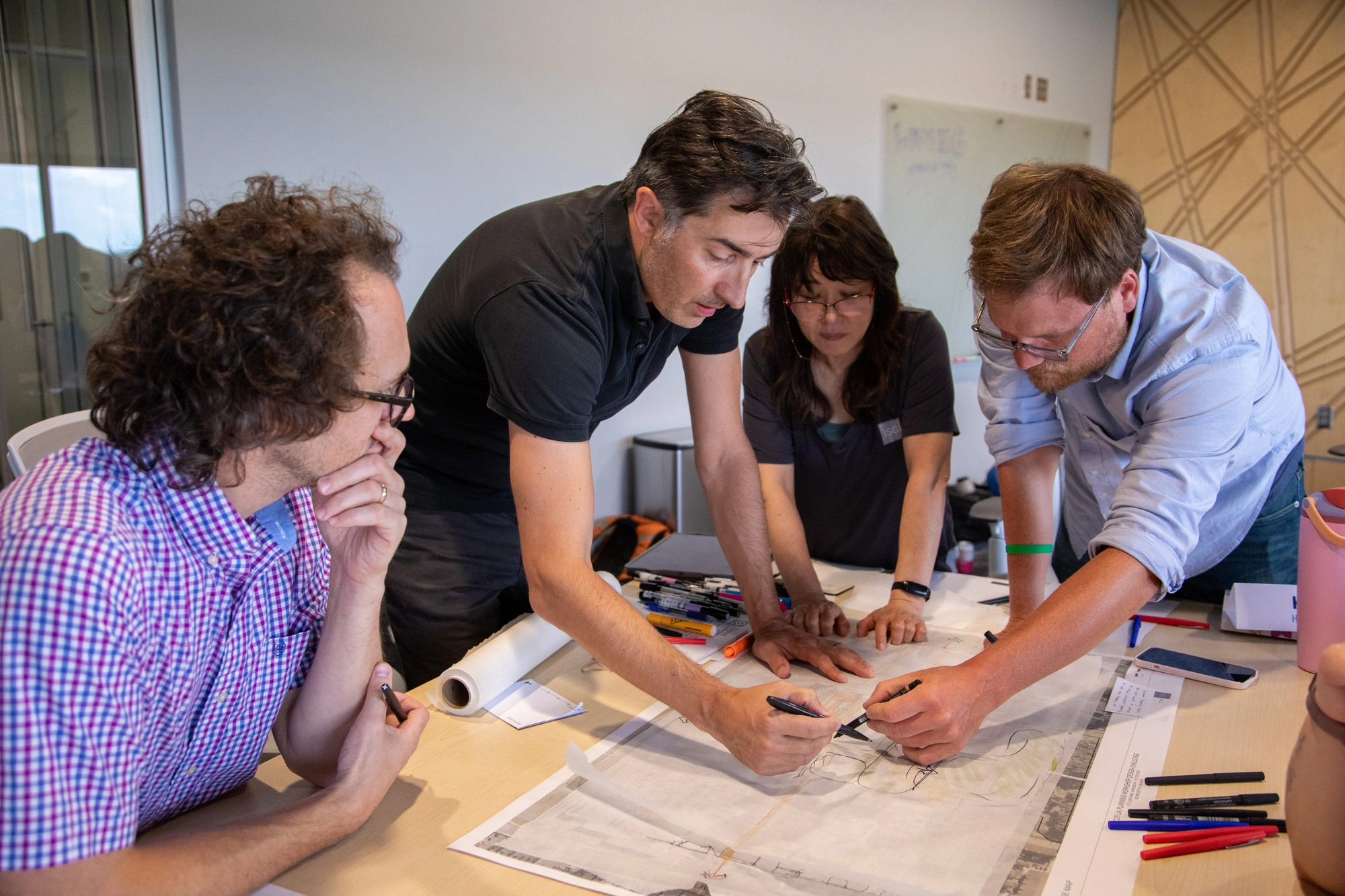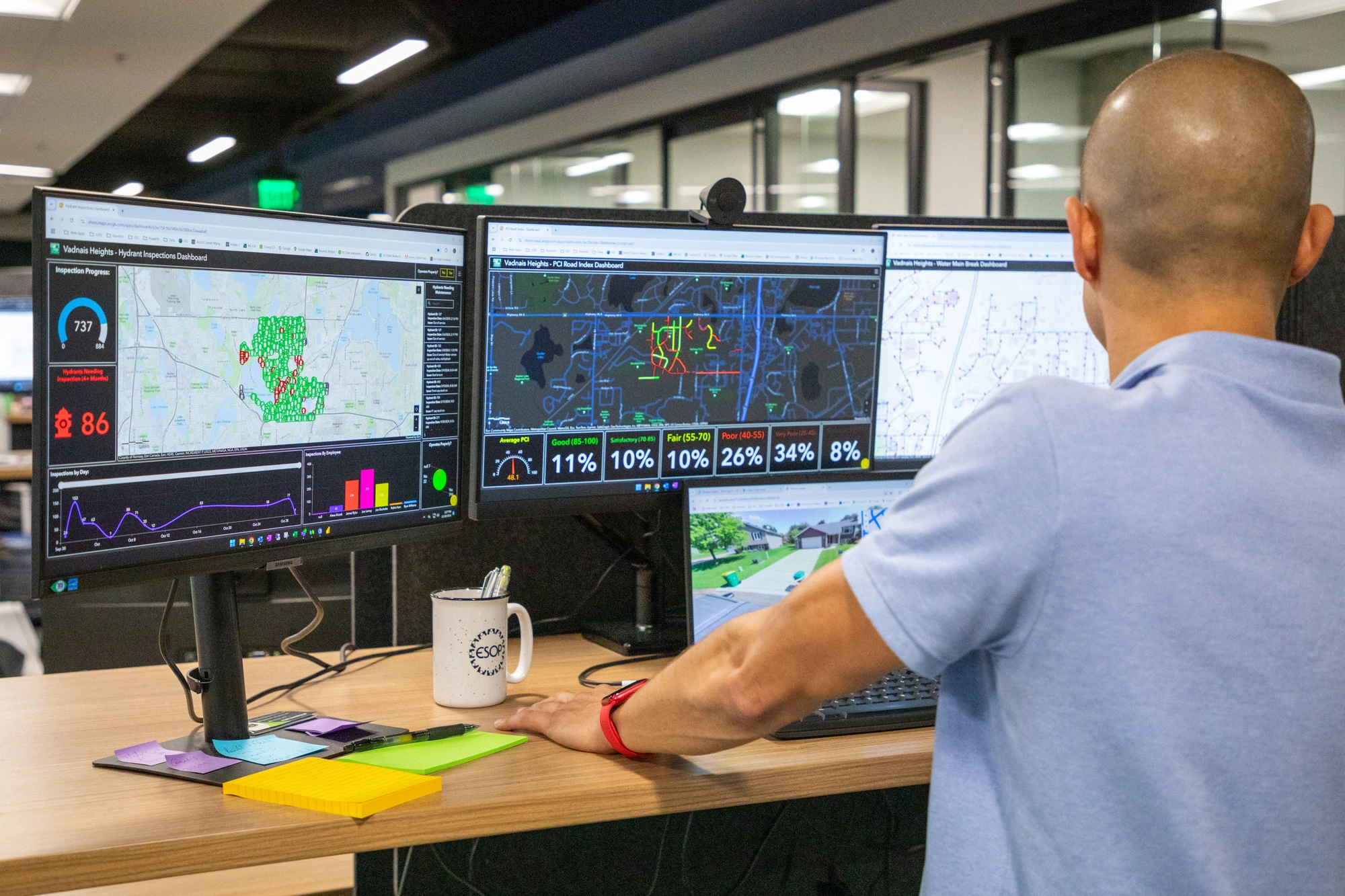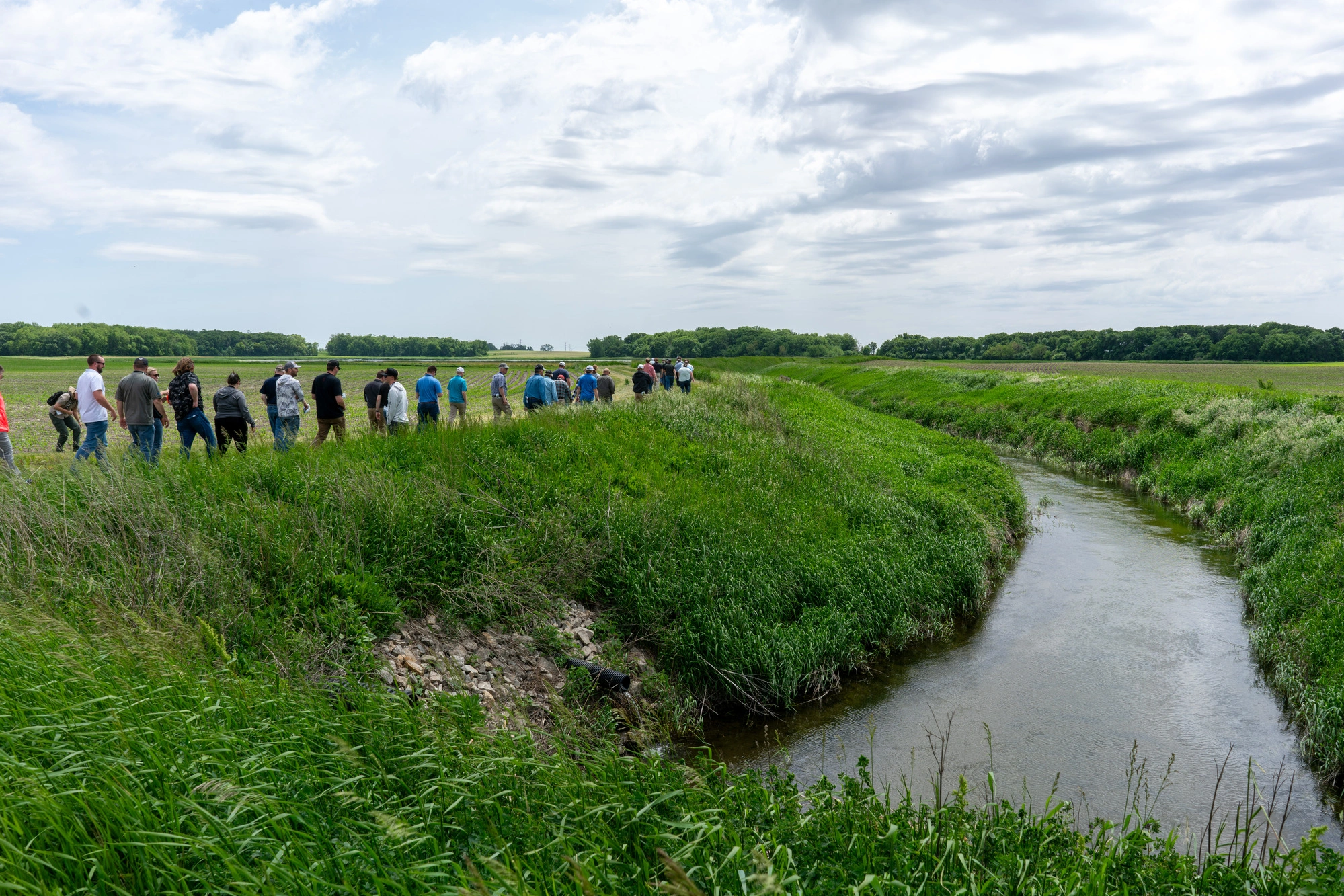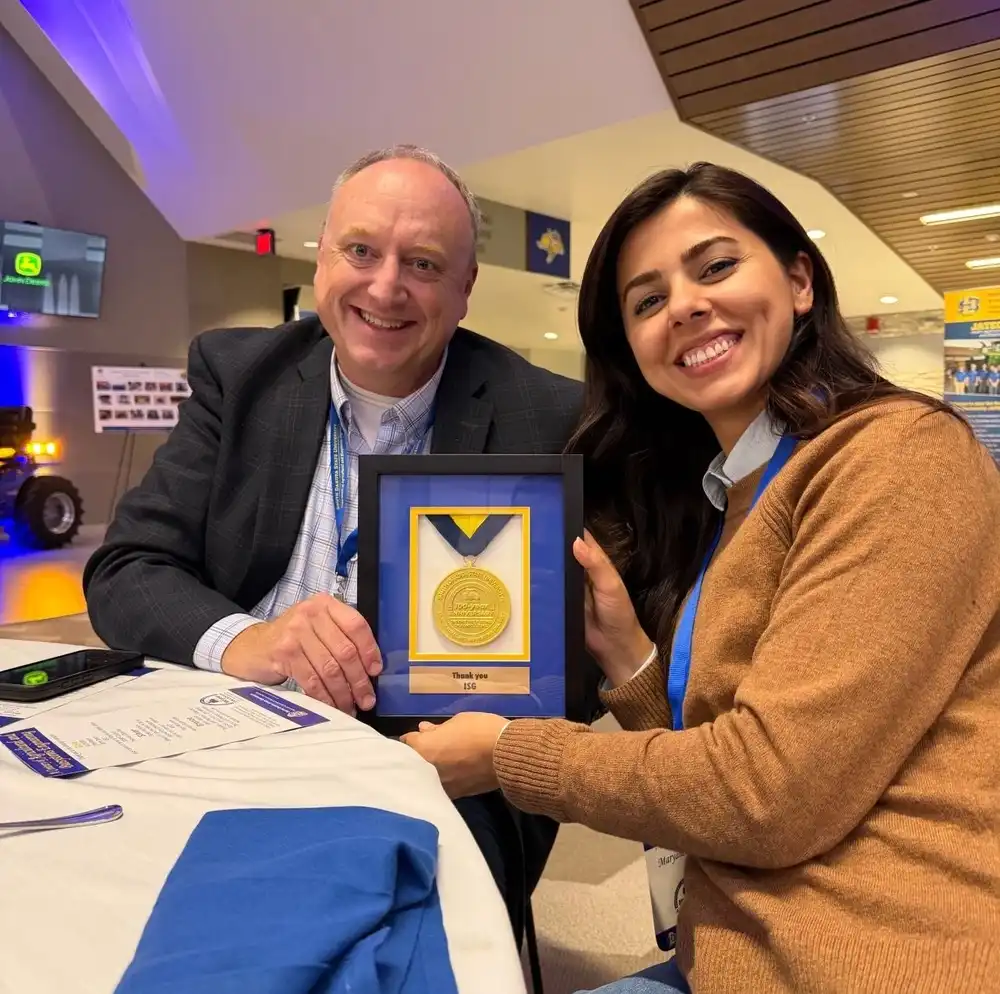The Tech Edge: Enhancing Healthcare Design with Precision Understanding and Speed
ISG’s applied technology team invests in state-of-the-art tools for several reasons, the most important: added value. With devices and services like drones, visualization, geographic information systems, 3D scanning, and virtual reality, our trained operators gather data efficiently, with precision detail. We exceed expectations to deliver accurate data, allowing for better decisions, faster—critical to healthcare environments of all scales. As the needs of health systems continuously evolve, ISG has uncovered how these tools create strategic solutions and increase operational efficiency.
Drone technology illustrates medical campus evolutions. Drones provide incredible value, capturing aerial photos, quickly modeling surfaces, and efficiently developing site plans. On a sprawling healthcare campus that has evolved over decades, it helps us understand the connections of renovations and building additions. When needing to evaluate a smaller scale, drone cameras can also reach inaccessible locations. Rather than relying solely on a two-dimensional floor plan, we have a more accurate and valuable three-dimensional (3D) vantage point.

Maximizing healthcare real estate made easier by 3D scanning. We continue to see a rise in health systems consolidating campus space to get better value from existing real estate. The unknown conditions raise questions and cause delay. ISG uses 3D scanning to capture and document detailed information to aid in expedited decision-making. Our design and engineering teams can accurately map and model project features like utility piping, structural elements, and soil corrections. Especially helpful in complex renovations or complicated utility spaces, the insights gained minimize change orders and allow for safe, non-intrusive analysis of existing structures. ISG’s 3D scanning tools make assessment possible by seeing what is invisible and ultimately making more, with less.
Building performance improved with thermal imaging. Another part of our toolkit used as an assessment tool is thermal imaging. Working with clients or industry partners, we evaluate the building envelope to understand how we can improve it. Hyper-detailed 3D imagery integrated with design software illustrates building conditions that help our designers pinpoint and quickly articulate deficiencies or repair. Most recently, Lerch Bates, an industry expert and technical advisor in building lifecycle engaged ISG to evaluate a 20-story building with our thermal imaging technology and experts.
ISG provided Lerch Bates with detailed drone imagery and videos, instrumental in our condition assessment of multiple high-rise medical buildings in Rochester, MN. From scope alignment to coordination of on-site drone survey and follow-up discussions, ISG was supportive throughout the entire process. – John Zawadsky, PE, MBA, Sr. Market Development Consultant

Virtual reality enhances design experience. Virtual reality helps create the closest sense of how the design of a space feels before it is built. Engaging with 3D details can be enhanced by a variety of empathy filters, specific to a user population. How can we experience a space as a child in a pediatric clinic? Or a mother who recently gave birth and has mobility challenges? Someone who has cataracts?

Experiencing projects through a unique lens allows designers to create better spaces by interacting with the proposed reality. This approach fosters a more authentic experience, increases confidence, and builds consensus among stakeholders. By gaining deeper insights, designers can enhance design decisions and streamline the project process, leveraging the benefits of this evolving technology.
By having better data, there’s less assumption, therefore less risk. The insights gained with our applied technology create value for ISG’s healthcare partners and clients. Used for facilitating client or community engagement, as well as construction observation, our teams utilize the information to serve as a proof point and with our planning and engineering experience, we can make more informed design decisions. Connect with us to save time and money with our applied technology resources and experts.
See ISG’s applied tech in action: Design and Engineering Services | Architectural Services (isginc.com)
Related Articles

.webp)
ISG Recognized as a 2025–26 Emerging Professional Friendly Firm for the Fourth Consecutive Cycle
ISG has been honored as a 2025–26 Emerging Professional Friendly Firm by AIA chapters in North Dakota, South Dakota, Wisconsin, and Minnesota in recognition of its commitment to fair compensation, licensure support, mentorship, and growth for early-career architects.













